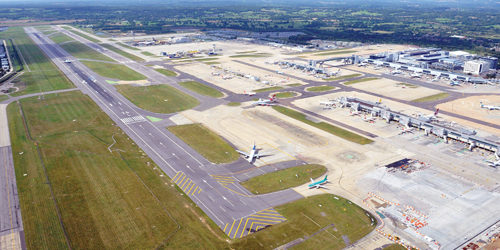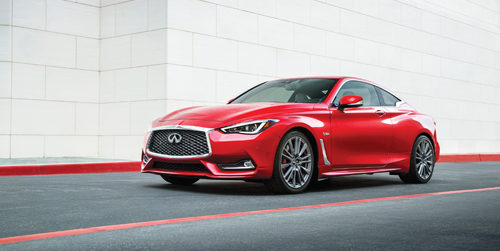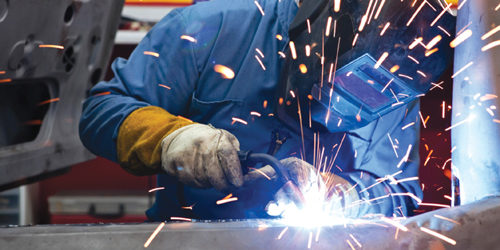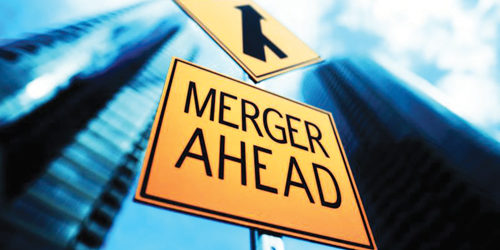
After years of fielding questions on whether or not Gatwick will get the green light to build the much-needed new runway, Stewart Wingate has found himself being repeatedly asked a totally new question. Quite simply, how has the airport been affected by the result of the Brexit referendum as a key gateway to Europe, Gatwick Airport could be seen a bell-weather for the UK economy in general. So how is business?
“We’ve never been busier,” says Stewart. “We publish all of our results every month, and month in, month out we continue to hit new passenger volume records throughout the year and we have increased our connectivity across the globe. Since the referendum we’ve had a very, very busy time and we’ll grow again this winter.”
Perhaps even more revealing than the increase in passenger numbers is the remarkable increase in cargo volume, which has risen by 25% in the last year. In fact, both the rise in cargo and passengers can be attributed to the same dynamic - Gatwick is now attracting more and more long-haul routes - and longer journeys usually means larger planes.
Stewart concurs: “Cargo volume in today’s world tends to follow the long-haul. So if you start having more success in long-haul routes, as we’ve done, then you’ll start to see significantly more cargo activity.
“Some of our long-haul carriers are having load factors (ie seat sales) close to 95%. The other part of the equation is what cargo can you get into the belly of the aircraft? Long-haul planes tend to spend longer on the ground for refuelling and cleaning because they’re bigger, which means you have time to load and unload cargo. On the European flights the turn can be just 30 minutes, whereas a long-haul plane might take three to four hours on the ground. It’s a critical element of the economics of the route.”
One factor in the change of emphasis has been the growth of long-haul low-cost airlines such as WestJet or Norwegian, operating with the new fuel-efficient Dreamliners: “You can now fly you Boston for £139 or £149, New York for £150, San Francisco will probably cost you £200, Singapore about £300. It’s transformational.”
The other factor according to Stewart is the upgrading of aircraft on other routes: “Earlier this year, EasyJet announced that they were upgrading their fleet order with Airbus to include A321s. What’s the significance of this? It roughly means 50 seats more per aircraft. We’ve already seen this with Emirates, for example, going from a 777 fleet, which they had six or seven years ago, to now having a full A380 fleet. The 777s can hold a maximum of 396 passengers, while the A380s can hold up to 853.
“We’ve had such a success on long-haul growth and what you tend to find is, success breeds success and we now have pent-up demand.
“When you’re in that situation where you’ve got people who we have courted globally, who we know would like to fly into Gatwick to serve the London and South East market, but we haven’t got a slot, then we are in a frustrating position. As a business person that means you’re in a situation where you can’t actually satisfy the demands of those airlines. The issue for the region is that those airlines will already have ordered the aircraft because there are long lead times on the aircraft, so they’ll now have to go and look for the next best alternative, which may be the UK or it may be a different country, or even a different continent for that matter.”
The Runway Debate Continues
Conversations about growth at Gatwick inevitably return to the airport’s campaign for a second runway, which seemingly appears almost impossible after the 2015 report by the Airports Commission opted for Heathrow as it offered greatest strategic and economic benefits. Stewart, however, remains optimistic, partly because the projections for growth at Gatwick, which formed a key factor in the findings, were so far off the mark.
Stewart says: “We have said for years now that the forecasts that have been used to look at this issue are woefully underestimating not only the potential of Gatwick but the actual situation on the ground. With the second runway in 2040, Gatwick would have grown, according to the estimates, to 46 million passengers per year – but actually we’re there already with a single runway. Likewise, it was claimed that Gatwick would get to 48 long-haul routes by 2050 with a second runway, but we’re already at 63.
“I understand the forecasts were based on passenger preferences dating back to 2008 which was before the full break-up of the BAA monopoly and the full enablement competition at Gatwick and Stansted.”
Seeing as the report was only published two years ago, the forecasts do seem nonsensical.
So is the battle between Heathrow and Gatwick still on.? In fact, Stewart advocates a different outcome: “Our position on Heathrow is, let us just compete with them and let them compete with us. The marketplace in London and the South East is big enough for the two of us to have a really good competition and you get more choice overall. I think you will get better value fares for passengers, regardless of whether you’re travelling on business or for leisure. In the post-Brexit world, when we want to reach out to the world, why on earth do we not want to just throw the doors open to the world and have the whole variety of flight options available to residents of the UK.
“From Gatwick’s perspective we’ve made clear to the government that we’re available. As the government themselves said, our scheme is financeable and deliverable, and our investors are quite prepared to go ahead and invest to do it.
“If we did the full scheme it would cost £8 billion but it’s a phasable scheme where we can build the first £3 billion’s worth, then the second phase which is a further £3 billion and then we build out the full scheme. It’s a very flexible scheme, and if we do it, it means that we will keep the airport charges to less than £12, which is about half of what Heathrow’s charges are today.”
The Brexit Factor
As Brexit edges closer, the travel industry looks on nervously and for Gatwick, the impact will be felt in both the business and tourist sectors. The days of Gatwick being regarded as a bucket and spade airport are long gone. Now one in six users of the airport are travelling on business.
Stewart confirms the increasing trend towards business travel. “We’ve got the likes of British Airways, EasyJet and Norwegian flying from virtually all of the major European cities where you want to go and do trade. The carriers cater for this market. If you travel Norwegian you’ve got free WiFi on board; if you travel with EasyJet you can have your EasyJet Plus card which gets you through premium security and gives you speedy boarding.
“With an eye to the future when it comes to Brexit, one of the things that our industry is driving very hard is to really push the Brexit negotiating team to get the matter of traffic rights for air transportation sorted out at the earliest opportunity; because whilst we’ve had record-breaking figures since the referendum, what we want to do is to continue that growth.
“I don’t think it’s in the industry’s interests to be alarmist. We’ve had the opportunity to meet, as an industry, with our government and the good news is they recognise when it comes to Brexit the number one issue that they’ve got to grapple with and sort out are the rights to fly between the UK and Europe and also between the UK and North America. With other countries we will put in place bilateral agreements, so nothing changes there. But, of course, these are the two biggest markets, so the issues have to be resolved.
“The thing that the industry has impressed on government is that the lead time for the product that the airlines sell is very long indeed. For example, tickets for planes that fly in the summer season of 2019 will start to be sold as early as the autumn of this year. It’s an issue which is really quite pressing, not just for the UK government but also for the EU side because commitments are being made.
“Our expectation is that it will get sorted out, it’ll be one of a number of issues that, as and when the negotiating teams get to it, they will have to figure out because surely it’s got to be in the interests not just of the UK but also of the Europeans.
“We haven’t actually Brexited as yet, so when I talk to business people across the area, often the way that it’s characterised in the business community is that Brexit still lies ahead. It’s getting closer with every day that passes, of course, and as it gets closer then the uncertainty attached to Brexit is the thing that can affect business confidence. For certain businesses so far, like the airport, we’ve seen very, very positive statistics and financial performance within our businesses.”
Future Confidence
Whatever happens with Brexit and the proposed new runway, Gatwick has the confidence to invest in the future.
“We’ve invested £1.9 billion in Gatwick during my time here,” says Stewart. “I’ve been here just short of 8 years – that’s a heck of an investment that we have made and it’s a heck of an investment that our shareholders have supported.
“We are now looking at upgrading the railway station to improve the connectivity. Outside of London, if you just look at the UK to the south of Birmingham New Street, our rail station is the busiest. With seven platforms we really do have a busy rail station and we’re now in quite advanced discussions with Network Rail and the Local Enterprise Partnership in putting together a package which should see about £130 million invested in upgrading the rail station. There will be a bigger concourse area and will see easier access to and from the platforms and the 12-carriage trains that we’ve now got with the upgrades of the rail carriages for the Gatwick Express and Thameslink.
“Our commitment is to upgrade the rail station irrespective of expansion. We’d like to see a rail station that’s fit for purpose at Gatwick, as we continue to invest heavily in the airport. We’ll invest another £1.2 billion over the next five years upgrading the facility – we’d like to put some of our funds to work in upgrading the rail station.
“The keys to success for us are better service levels, continuing the strong levels of investment in the infrastructure so that we get a better built environment for passengers to travel through, and to continue our marketing efforts, not just with the airlines that we currently enjoy excellent relationships with but also with airlines from around the world to try and get the connections to the long-haul routes. That remains our focus and our strategy to deal with the transition.”






